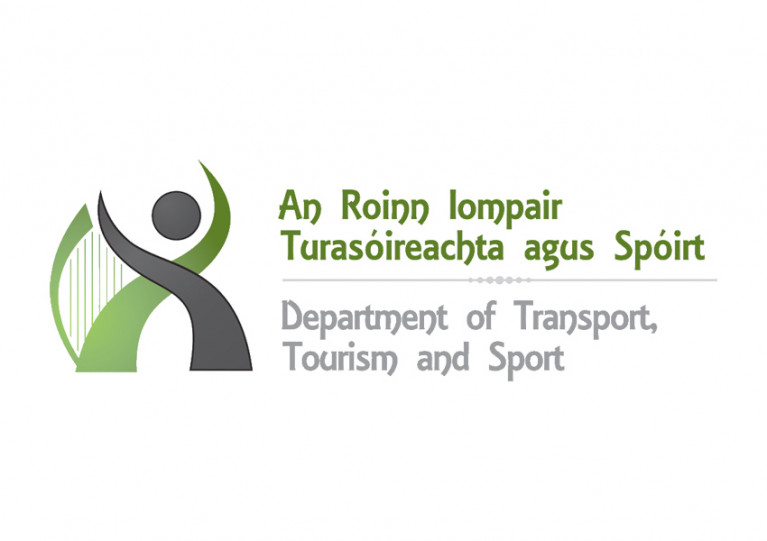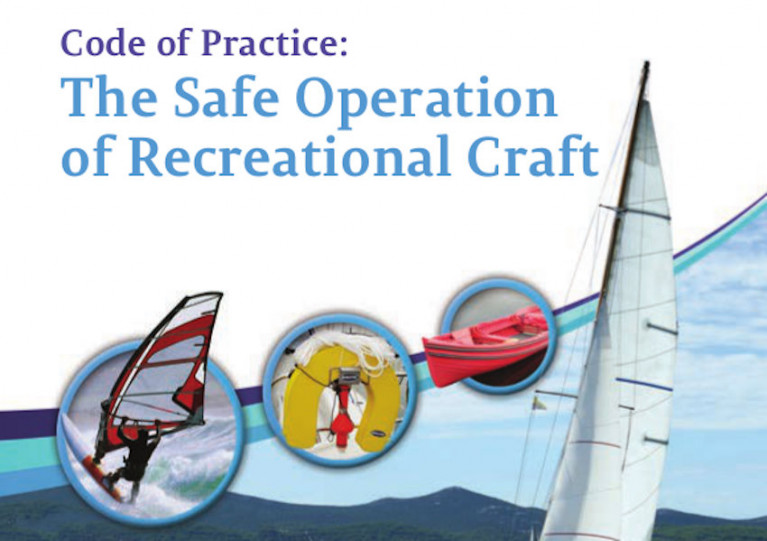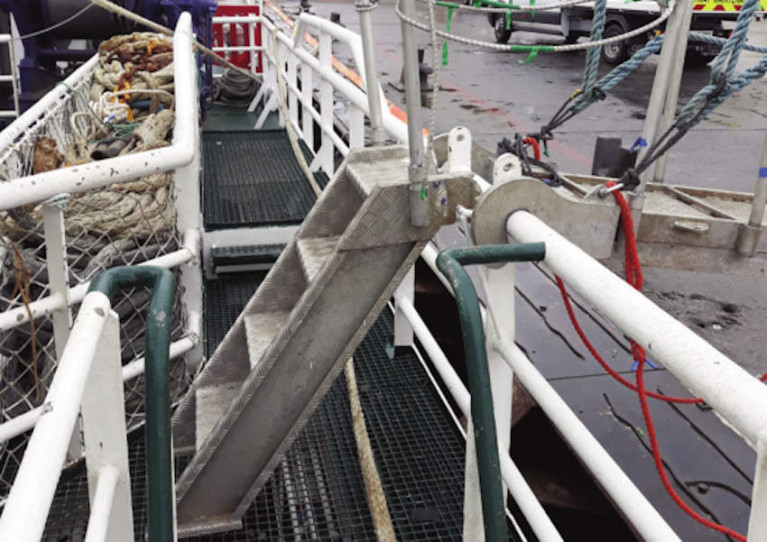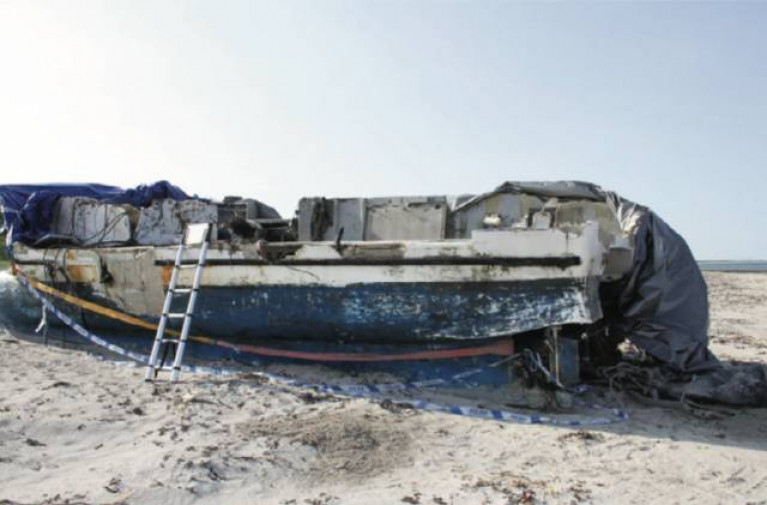Displaying items by tag: Marine Notice
Exam Schedule For Certificates Of Competency Now Available
A full schedule of the Irish Maritime Administration examinations for Certificates of Competency as Deck Officers, Marine Engineer Officers, Skippers and Second Hands for the year commencing 7 September 2020 is included in Marine Notice No 28 of 2020 attached below.
Owners and users of a range of pleasure and recreational craft in Irish waters are reminded to keep up to date with the Code of Practice for their safe operation.
The Code highlights the importance of personal responsibility for all those who take to the water.
Each person must take maritime safety seriously, prepare and plan for a safe trip, behave responsibly on the water and be properly equipped so as to be able to respond to any incidents that may arise.
The Code is intended for use by owners, operators and users of all pleasure and recreational craft operating in Irish coastal and inland waters and certain Irish vessels operating offshore, including:
- Sail and motor boats
- Sailing dinghies
- Personal watercraft (eg jet skis)
- Powerboats
- Canoes and kayaks
- Rowing boats
- Charter boats
- Ski boats and dive boats
- Windsurfers, stand-up paddleboard users and other non-powered craft
It contains information on legislative requirements, safe operation and advice on best practice when using a recreational craft.
The Code of Practice was most recently updated in late 2019. The free document is available to download from Gov.ie but hardcopies can be obtained on request, in both English and Irish, from the Maritime Safety Policy Division of the Department of Transport, Tourism and Sport at [email protected]
For more details on the Code, see Marine Notice No 27 of 2020, a PDF of which is attached below.
Developing Site Investigation Methodologies Survey In North Irish Sea From Next Monday
The latest Marine Notice from the Irish Maritime Administration advises that the Developing Site Investigation Methodologies (DeSIRE) Survey will be carried out in the North Irish Sea from next Monday 13 July.
This two-week survey will use seismic refraction and multichannel analysis of surface wave (MASW) equipment, as well as sparker seismic equipment, operated from the Ocean Navigator (Callsign EI018) and Fionn Mac Cumhall (Callsign EIDN2).
Work will be performed during daylight hours in accordance with safe operating practices regarding MMO procedures and cognisant of fishing gear. Both vessels will display appropriate lights and signals.
For further details, including co-ordinates for the survey area and contact information, see Marine Notice No 26 of 2020 attached below.
The latest Marine Notice from the Department of Transport, Tourism and Sport reminds fishing crews of the dangers associated with boarding and transiting across vessels, especially under the influence of alcohol.
The move is in response to recent reports from the Marine Casualty Investigation Board (MCIB), which found that alcohol was a factor in two unrelated incidents in Killybegs, Co Donegal in March 2019 and Rosslare, Co Wexford in May 2019, as reported by Lorna Siggins on Afloat.ie last month.
The notice also reminds of the duty of care on the part of owners and skippers “to provide a safe means of access to vessels while in the harbour and that a gangway or other suitable means, providing an appropriate and safe means of boarding a vessel, shall be made available”.
In addition, all those accessing vessels or working on exposed decks “whether at sea, in harbour or combing two and from moorings” must wear a personal flotation device, or PFD, which “will increase your chance of survival in the event of entering the water”.
The department highlights the risks associated with the consumption of alcohol and/or drug consumption and the dangers associated with boarding and transiting across vessels.
“It is evident from the recent MCIB reports that alcohol consumption continues to be a significant factor in marine incidents,” it says.
“A number of incidents have occurred where diminished human performance due to the effects of alcohol consumption have been primary causes or contributing factors, leading to the loss of life in some cases.
“Alcohol speeds up the rate of body cooling and thus increases the risk of hypothermia in the event that you fall into the water.”
Marine Notice No 25 of 2020 is available to download below.
Two scientific deep-sea moorings deployed at the Goban Spur off the southwestern continental shelf last year will be recovered and redeployed next week.
German research vessel Meteor (Callsign DBBH) will be involved in the redeployment on behalf of the University of Bremen and the German Federal Maritime and Hydrographic Agency (BSH), which is scheduled to begin next Monday 29 June and conclude Saturday 4 July, as part of scientific cruise M164 (GPF-19-1-105).
Similar to their current deployment, the deep-sea moorings will stay in the water for a period of about 13-14 months (to July/August 2021).
Both have been anchored by ~1,000kg bottom weights. Scientific instruments are attached at different depths to ropes and chains. Sub-surface floatation bodies will keep the moorings upright.
As this is sensitive scientific equipment, it is kindly requested that fishermen and marine operators engaged in such activities as bottom trawling or laying of static gear avoid the locations concerned to avoid damaging the equipment or damaging fishing gear.
Details of the locations of these dee-sea moorings and contact information are included in Marine Notice No 24 of 2020, which is available to download below.
The Department of Transport, Tourism and Sport has issued an amendment related to stability requirements in the Code of Practice for Small Fishing Vessels of less than 15m length overall.
The Code of Practice is currently under review, and a revised version will issue later in the year. In the meantime, boat operators are advised in a new Marine Notice to note the change in procedure with regard to measure the stability of small fishing vessels, which will take effect immediately.
In essence, it clarifies that existing vessels (keels laid prior to 1 May 2004) undergoing both a roll test as described in Annex 1 and inclining experiment as per the provisions of Annex 7 for new vessels (after 1 May 2004), but are not required to comply with both tests.
Where the “strongly recommended” stability standards described in Annex 7 are not applied, then the vessel shall be subjected to a roll test as described in Annex 1, with the vessel in ‘normal departure port condition’ and typical ‘arrive port condition’.
Marine Notice No 23 of 2020 is available to download below.
Mariners off the Mayo coast are advised to be on the lookout for two separate undersea operations from next week.
From Sunday 17 May, America Europe Connect 2 will be installing a subsea fibre optic cable in Irish waters to Oldhead, near Westport.
The works from the CS Responder involve a pre-lay grapnel run until Tuesday 19 May, followed by the cable installation from Wednesday 20 May to Tuesday 16 June, weather permitting.
Three other vessels will also be involved in these works, fun details of which are included in Marine Notice No 21 of 2020 attached below.
Meanwhile, Vermillion Ireland will begin a near shore inspection survey of the Corrib gas pipeline and umbilical from next Wednesday 20 May.
Details of the locations and vessels involved can be found in Marine Notice No 20 of 2020, also attached below.
The Department of Transport, Tourism and Sport has amended Marine Notice No 06 of 2020 to include an updated annex from the HSE on measures required for all vessels, including fishing vessels and pleasure craft, entering Irish ports.
Masters of vessels arriving from ports outside the island of Ireland must complete both a Maritime Declaration of Health, and an updated Crew List (and Passenger List for passenger ships).
Those arriving in port from other ports located on the island of Ireland no not need to submit the health declaration or crew list, except where any crew member or passenger develops potential Covid-19 symptoms during the course of the voyage.
These symptoms include a fever, cough, sore throat, or shortness of breath requiring hospitalisation. Also requiring notification is where any crew member or passenger has been in close contact with a confirmed or probable case of Covid-19 infection.
Full details of submission guidelines are included in the annex to Marine Notice 06 of 2020 which can be downloaded below.
Inspection and maintenance on the Corrib gas pipeline and associated infrastructure is scheduled to take place from next week.
Conducted by Vermillion Ireland, the works from next Wednesday 6 May, weather permitting, are expected to last for around 20 days and comprise an inspection of the offshore pipeline and subsea structure as well as engineering work on well P3.
The vessel Edda Sun (callsign LARF7) will undertake these works using its own mounted equipment as well as that mounted on a remote operated vehicle (ROV). It will be listening on VHF Channel 16 throughout the project.
Full details of the works area are included in Marine Notice No 19 of 2020, a PDF of which is available to download below.
The Department of Transport, Tourism and Sport has been advised by TechWorks Marine that the lantern on the monitoring buoy in Killybegs Harbour has stopped working.
The buoy is part of environmental oceanographic monitoring for the Department of Agriculture, Food and the Marine in a project that began last September, and can be found at 54° 37.03' N, 008° 26.40' W.
The buoy is deployed on a dual mooring. Two small marker buoys indicate the locations of each of the buoy’s moorings. Vessel traffic will need to avoid this area.
The lantern will be repaired as soon as possible on the next viable tide and weather window. For further information contact TechWorks Marine at 01 236 5990.






































































